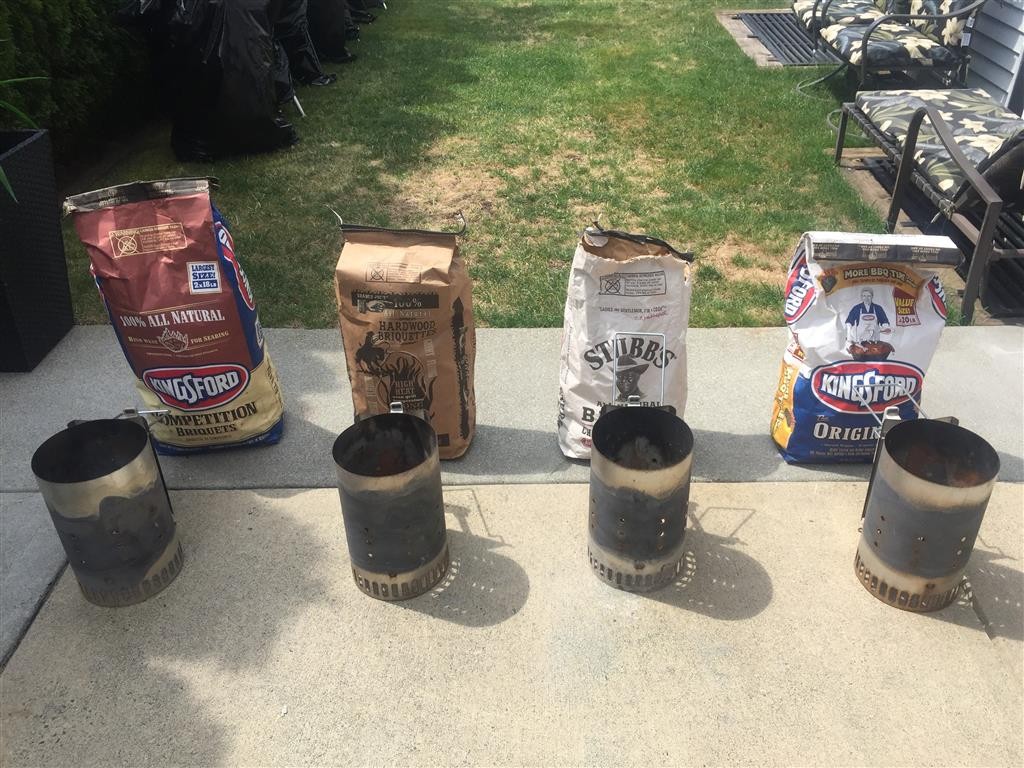
We all know there are many choices out there in the way of kettle fuel – but what does each unique brand or product line bring to the table? and is there really a measureable difference between how much ash they produce? Let’s take a closer look at 4 of the more readily available briquette offerings from Kingsford, Trader Joes and Stubbs and see how they stack up.
I will be the first to admit this is not the most scientific or controlled test in the world, but I hope it at least gives everyone a glimpse at some real world results and a better understanding of which charcoal is right for the job.
Simple items used for the test:
4 Large Weber Charcoal Chimneys
4 Weber lighter cubes
4 Pans to collect ash
1 Digital Scale
1 Lighter
and a selection of charcoal.
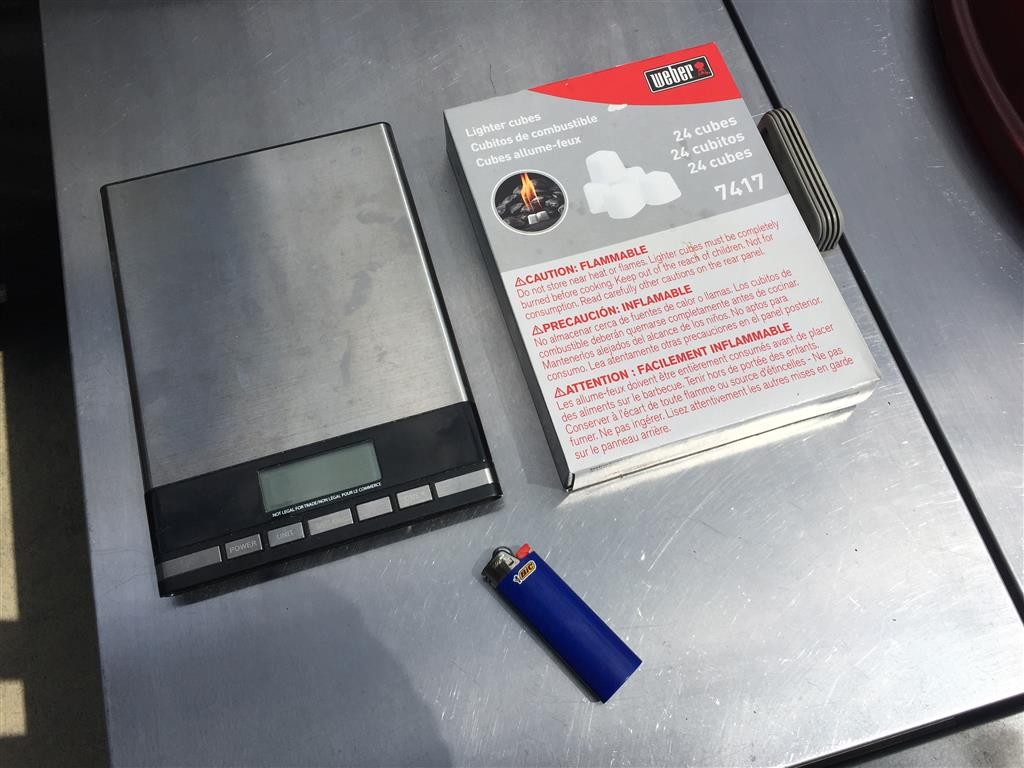
Since the goal was to weigh the ash at the end of the burn, I decided to base the test on weight and not the number or quantity of briquettes used. Each charcoal chimney was filled up as close as possible to 7lbs loaded. Considering the empty chimneys weight just a hair under 2lbs that leaves us with 5bs of raw material being used.
The competition briquettes are substantially lighter than all three of the other offerings which I found quite interesting. They had a fairly even consistency and held their form well. Take a look at how much more of the chimney the Kingsford Comp fills due to its low density.
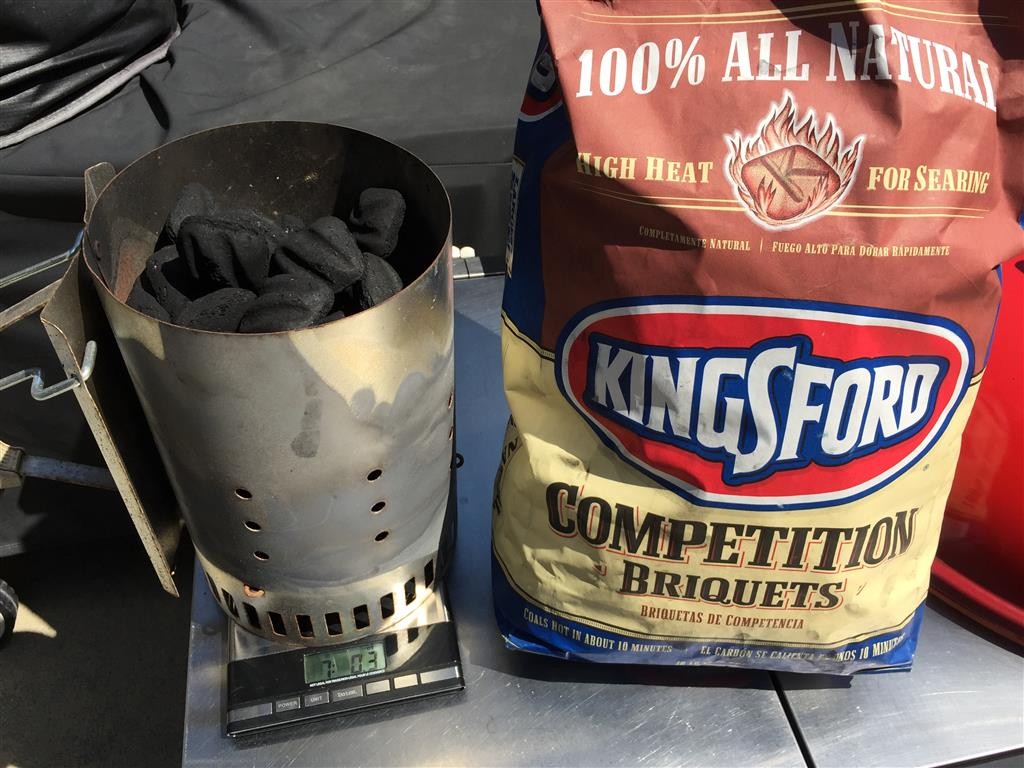
The Trader Joes has a reputation of being crumbly and I would have to agree. The briquettes are very rough and tend to break apart fairly easily when you move or pour them into the cold chimney. There was a large black pile of soot sitting down below after dumping in a fresh load from the top of the bag. This was the only one of the three to exhibit this so perhaps they are using a less aggressive binder. I’ve gone through a few bags of this now and have noticed one other thing that bothers me a little bit. In almost every bag I find a few briquettes that appear to have some sort of plastic fibre stuck within. This is consistent over multiple bags so its not just a random occurrence and definitely doesn’t appear to be a natural fibre to me…
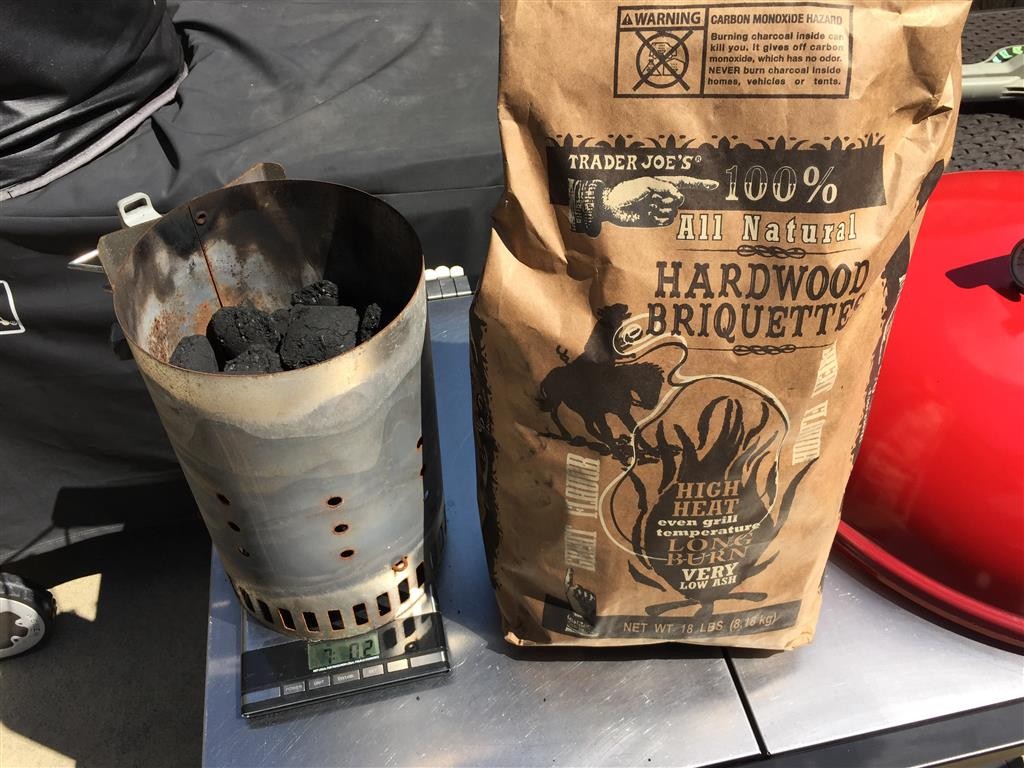
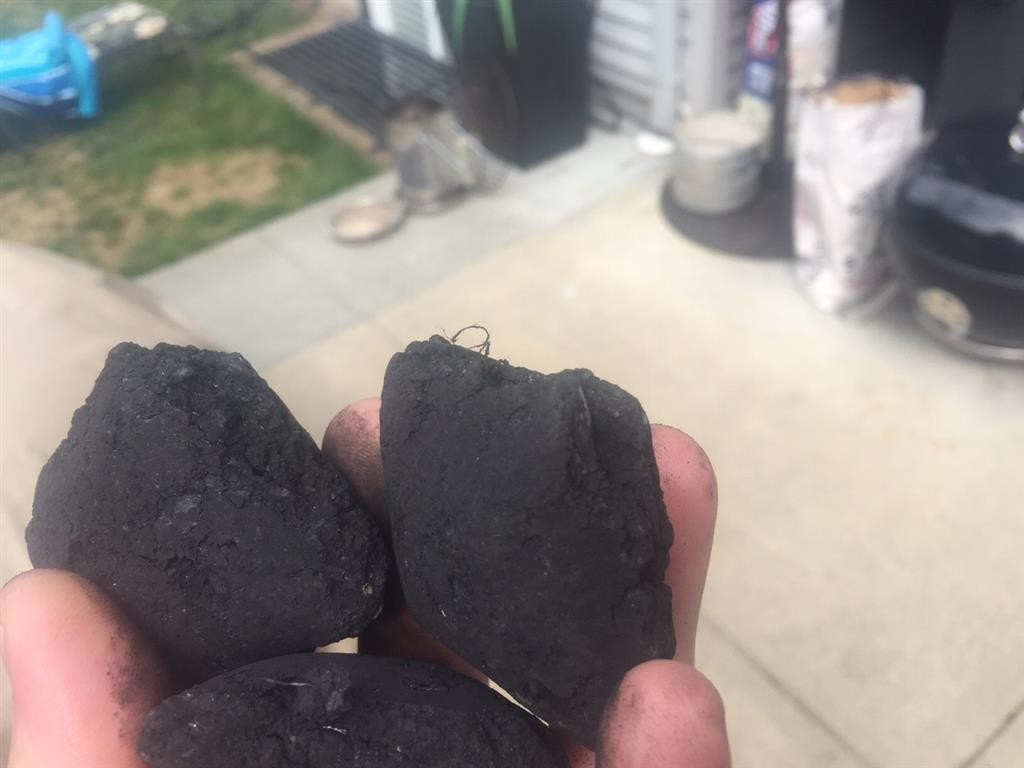
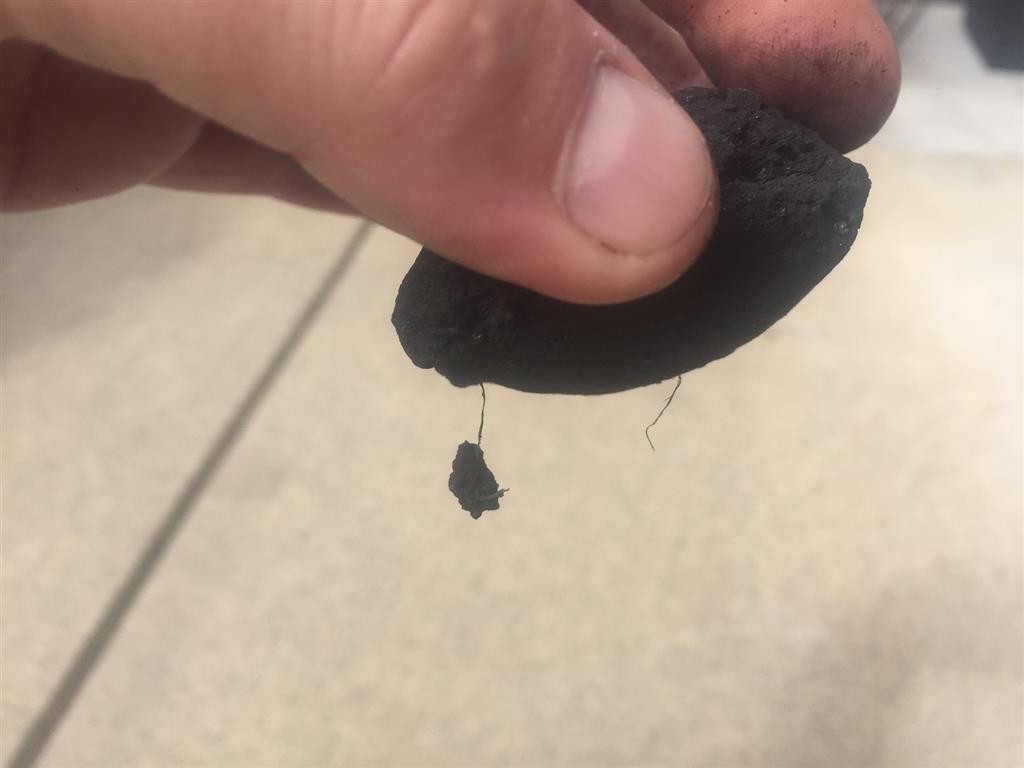
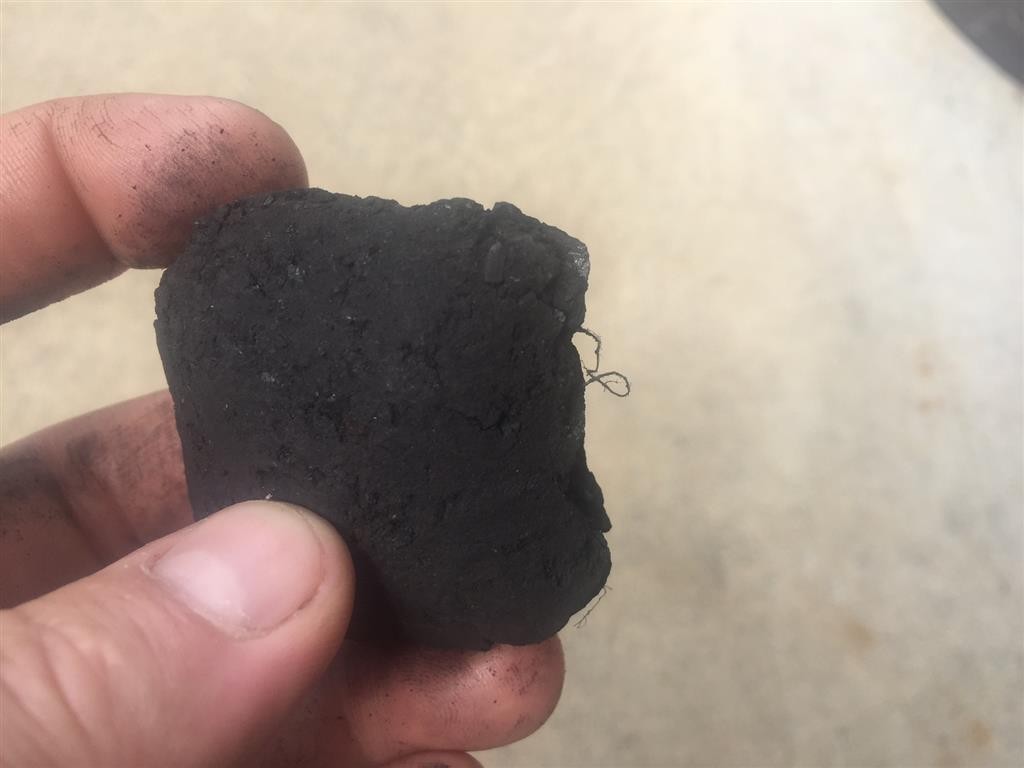
The Stubbs briquettes are very dense and finely ground. Not many rough bits at all here – smooth to the touch and evenly packed. These briquettes are also smaller than both the Kingsford and Trader Joes by about 30%. Because of this smaller form factor it packs together tighter and therefor allows you to preload more fuel into the baskets, chimney or cooker.
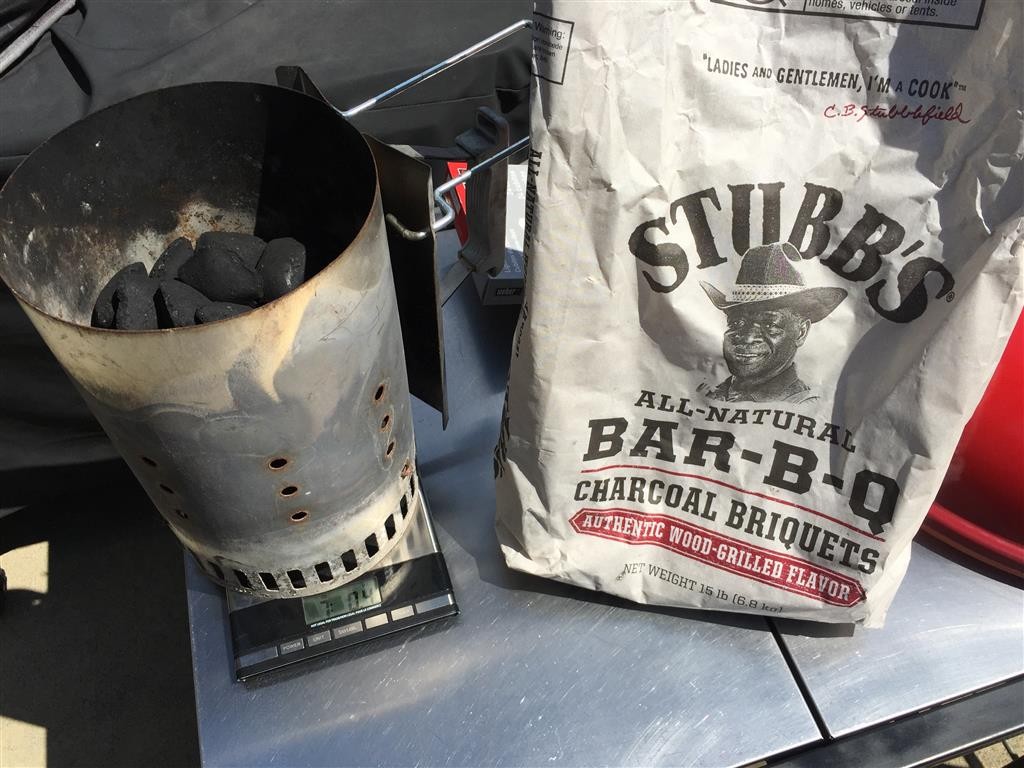
And finally the tried and true Kingsford Blue Bag. Visually almost identical to the Comp but each briquette is noticeably heavier. Slight dust left behind but hardly enough to even worth mentioning.
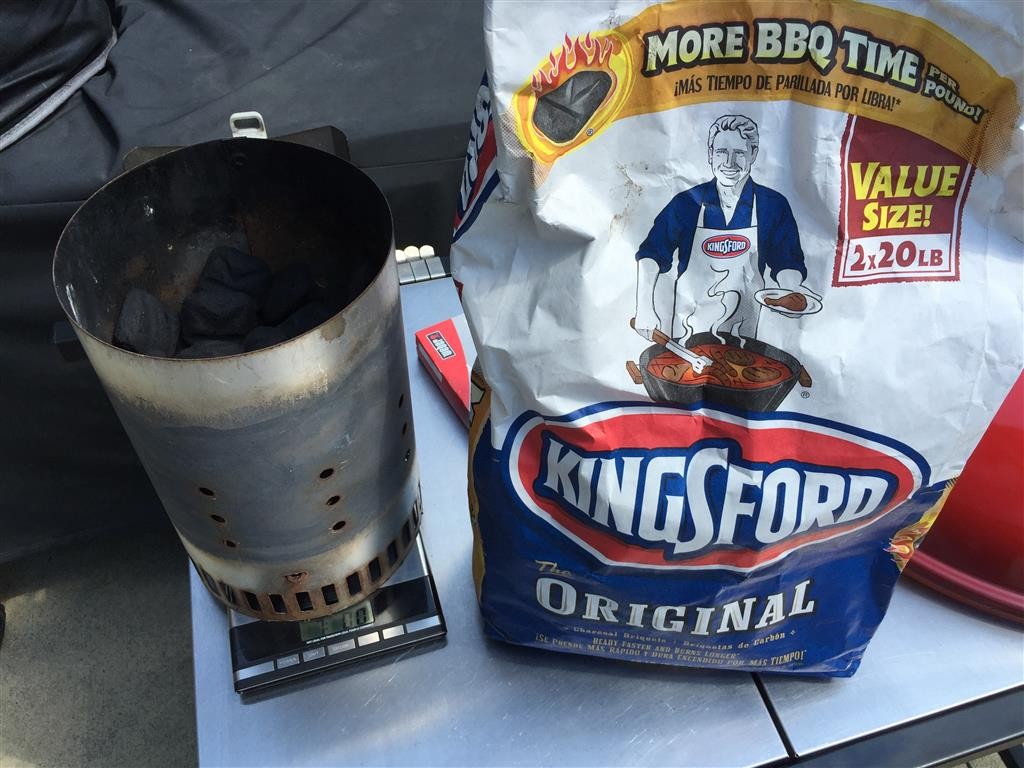
All four chimneys were then lit at the same time using one Weber firecube each.
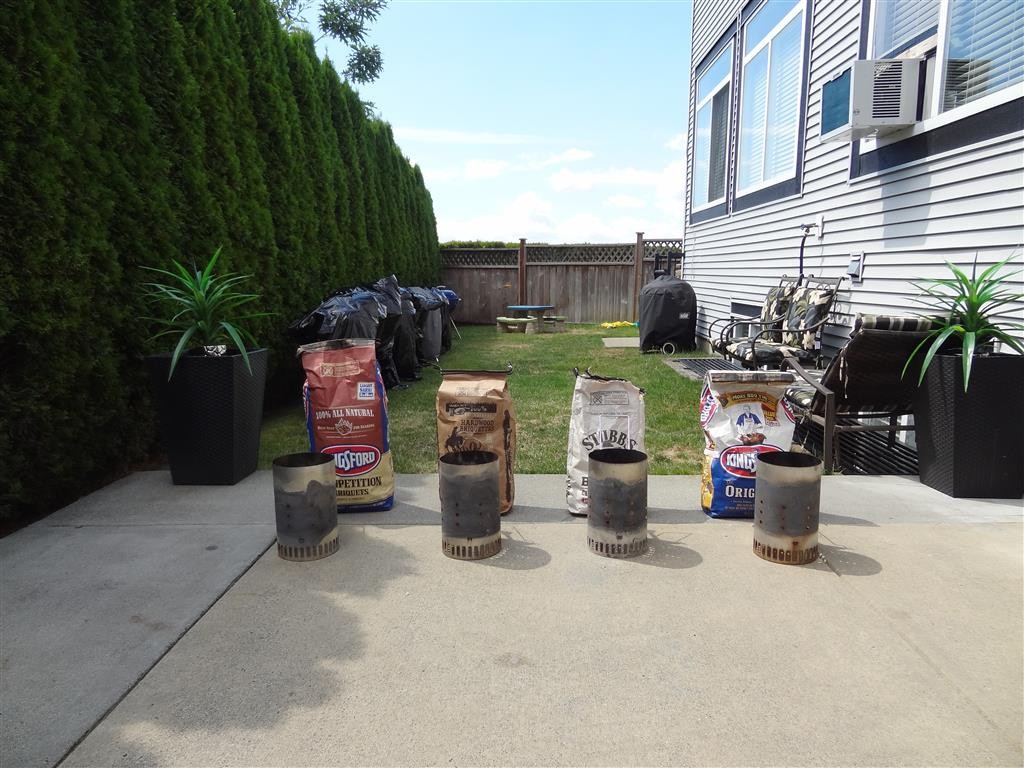
Here is video showing how much smoke each chimney puts off for the first 5 min of start up.
I also started the timer 5 min late so these first shots are actually 25 min in…
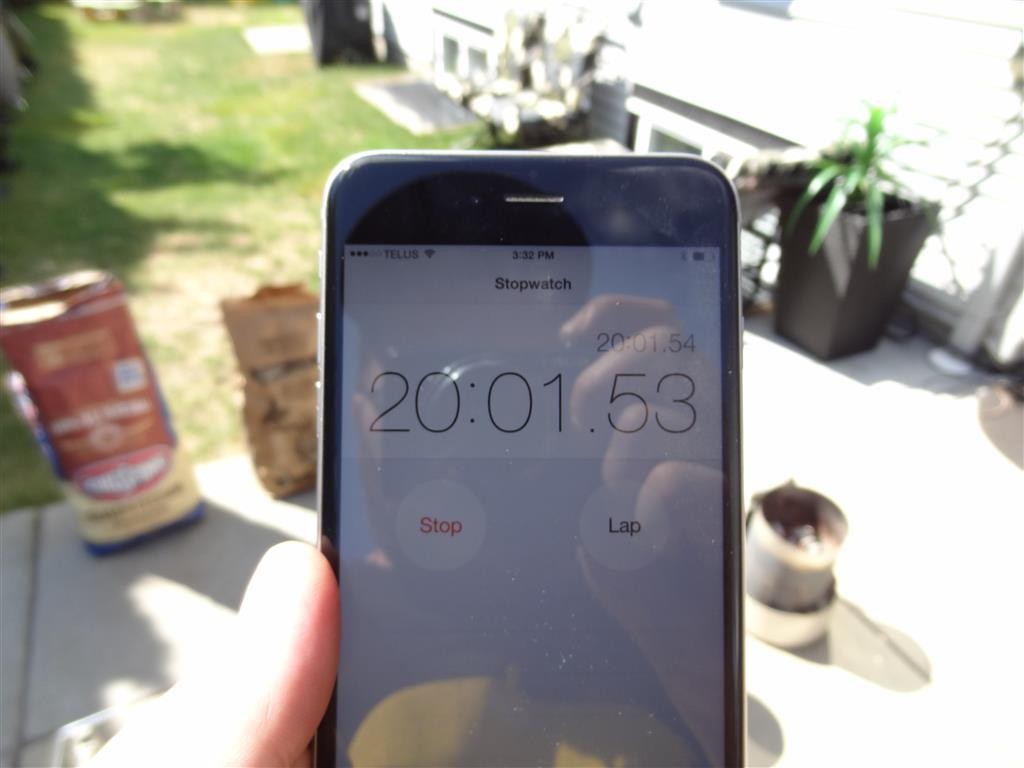
From Left to Right: Kingsford Comp and Trader Joes
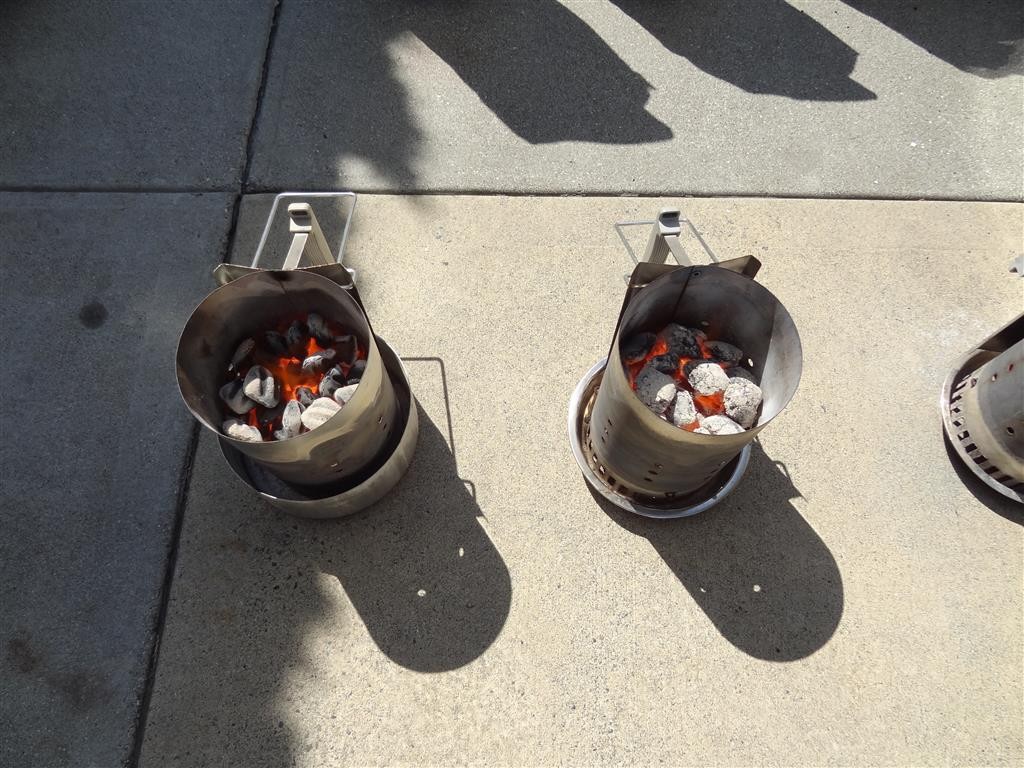
…Stubbs and Kingsford Blue
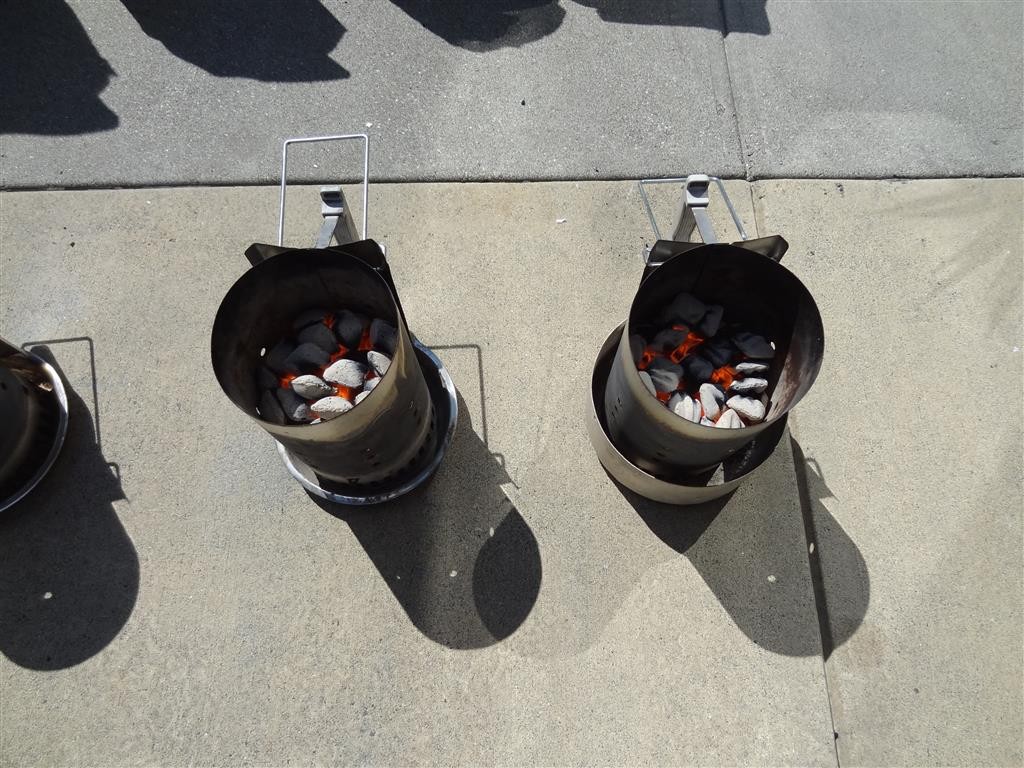
The Kingsford comp is definitely throwing more heat than the other 3 chimneys. You can see a large flame collecting in the middle of the chimney already and it’s glowing orange more than the others as well.
Here we are 45 min in:
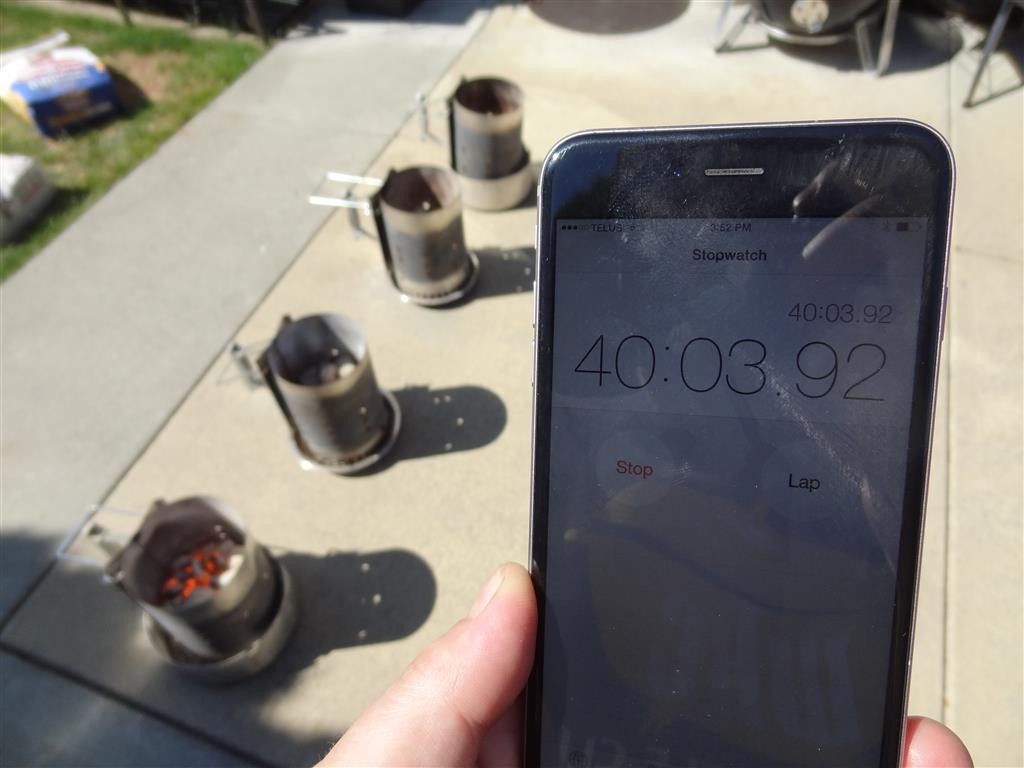
You can see how fast the Kingsford Comp is losing mass as it burns. At this point it has already burnt down significantly – enough that the charcoal level in the chimney in now equal to other three briquettes.
Kingsford Comp:
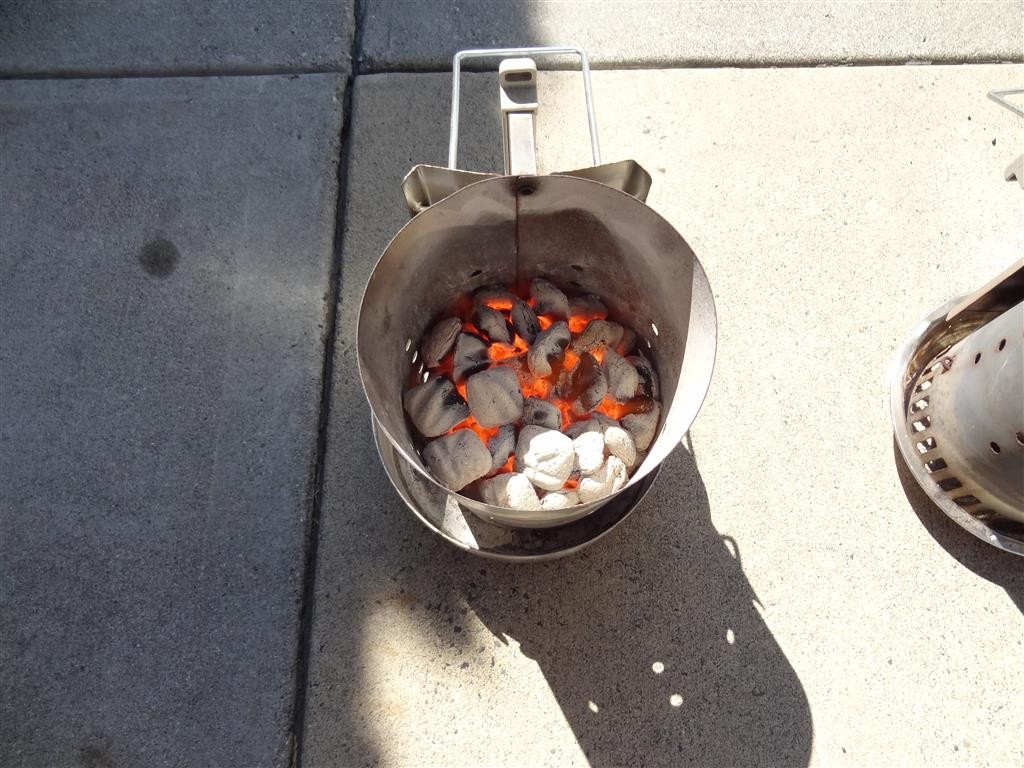
Trader Joes:
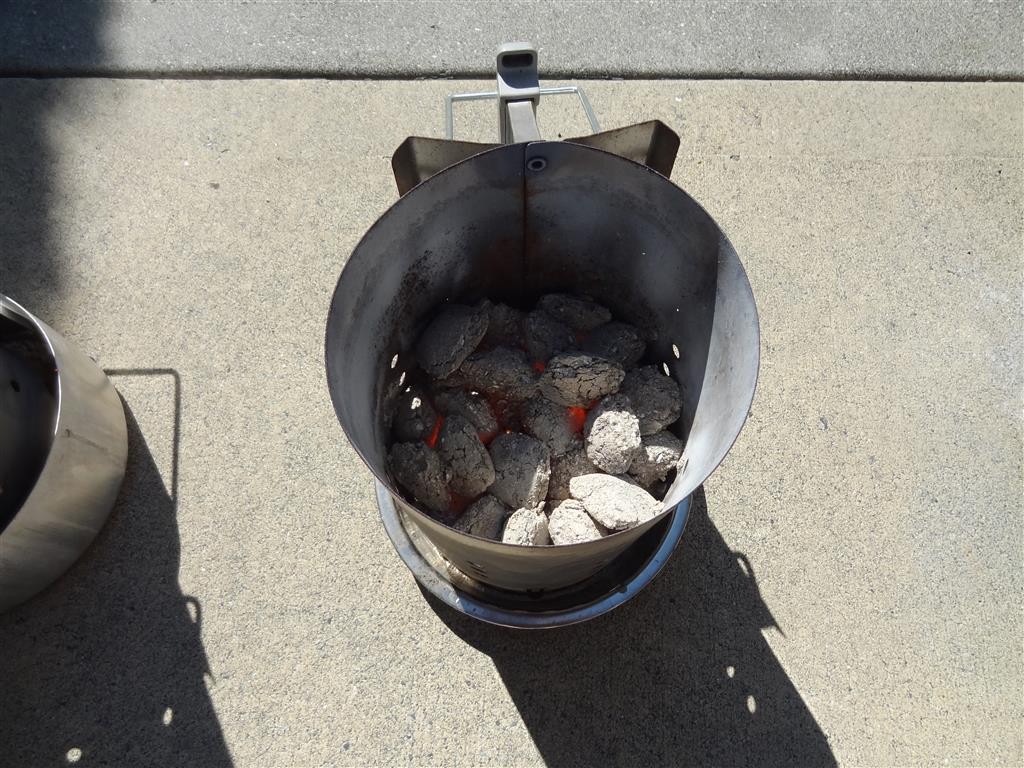
Stubbs:
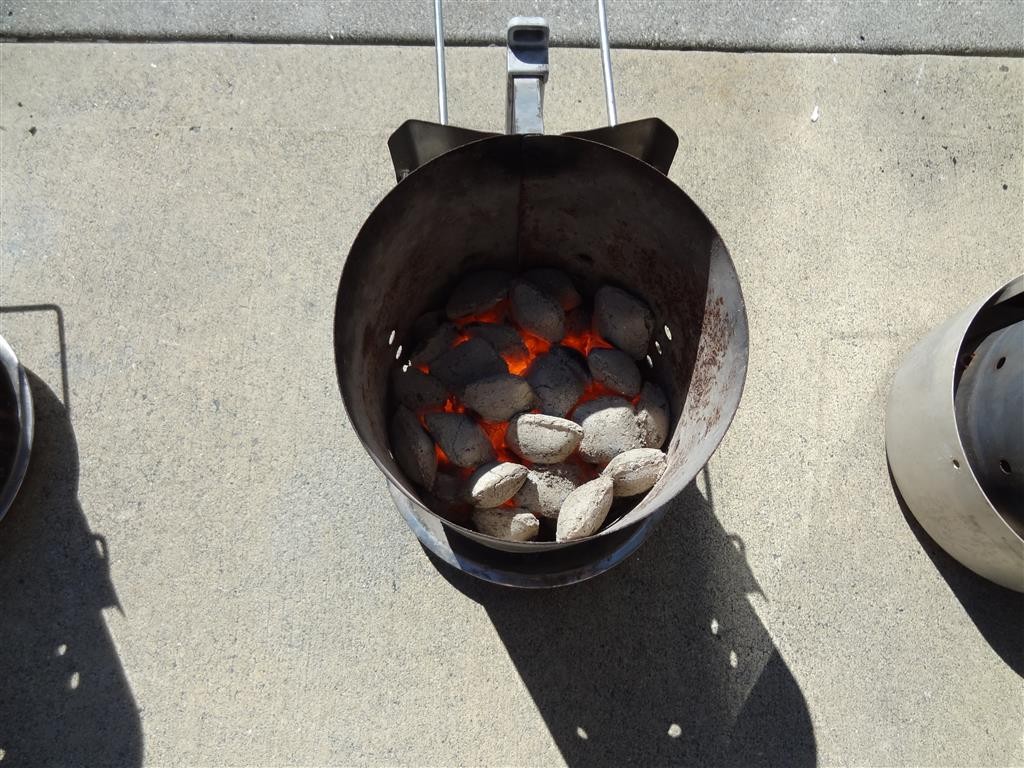
Kingsford Blue:
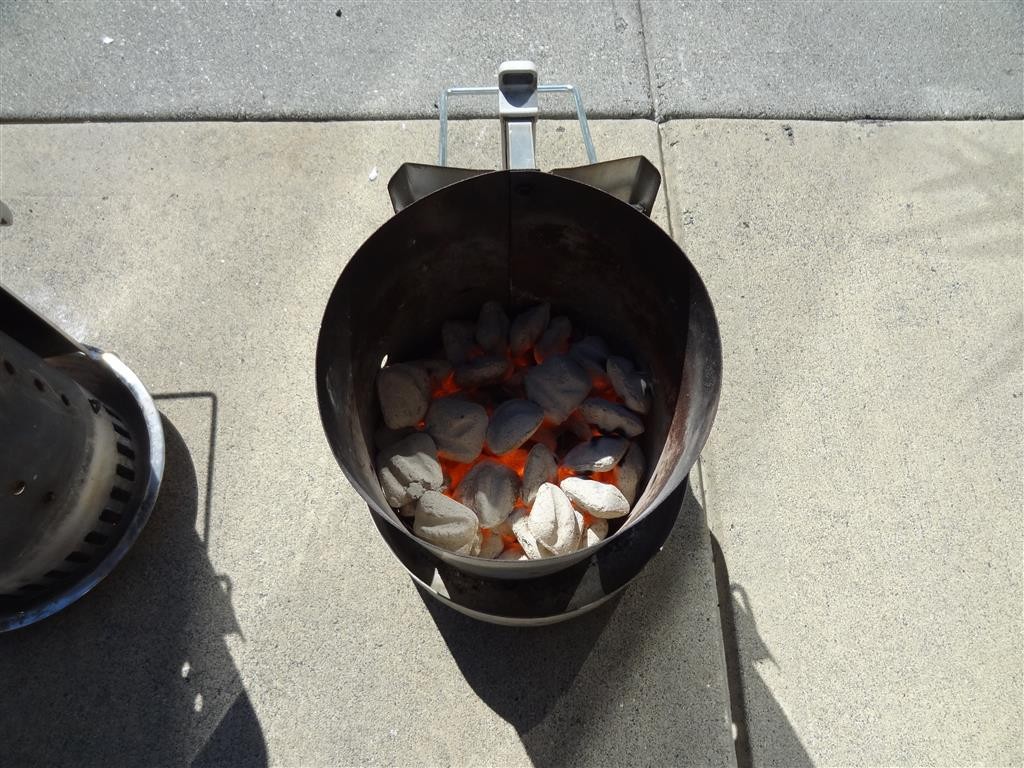
We’re now an hour in and fuel is starting to run low…
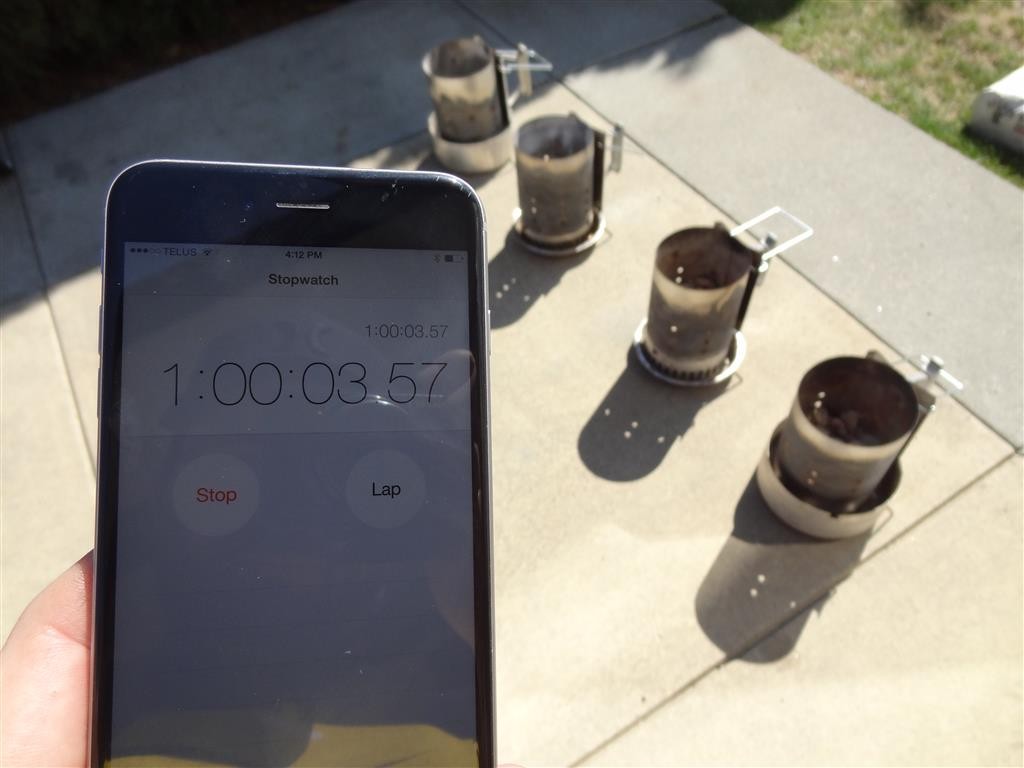
Kingsford Comp:
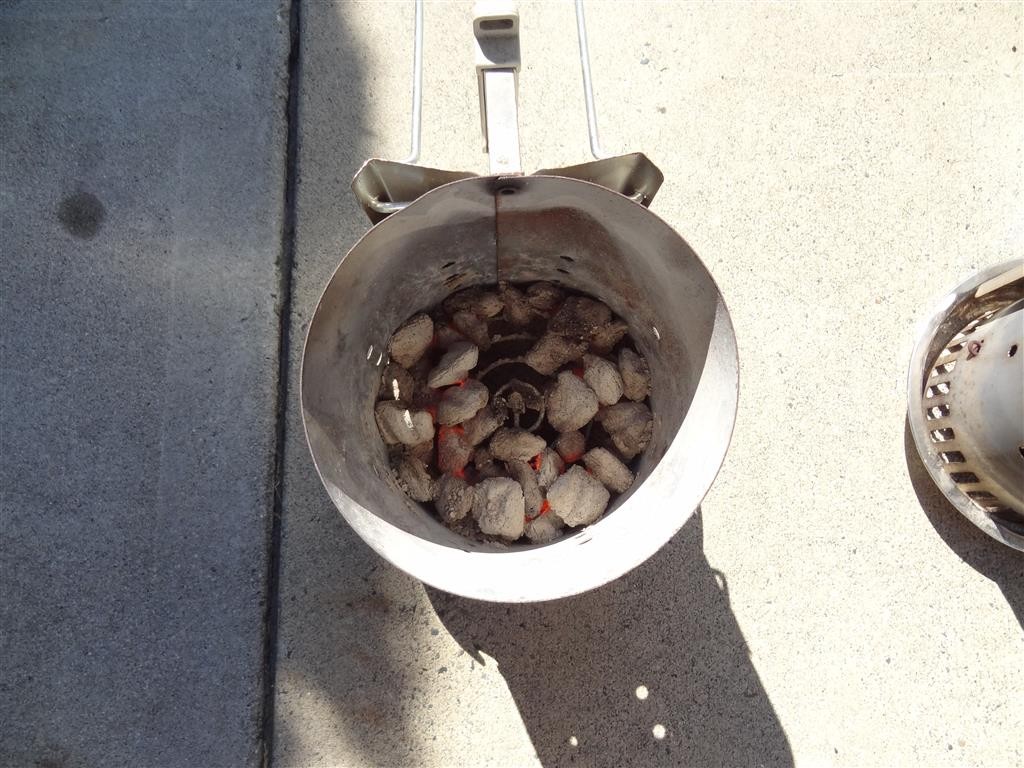
Trader Joes:
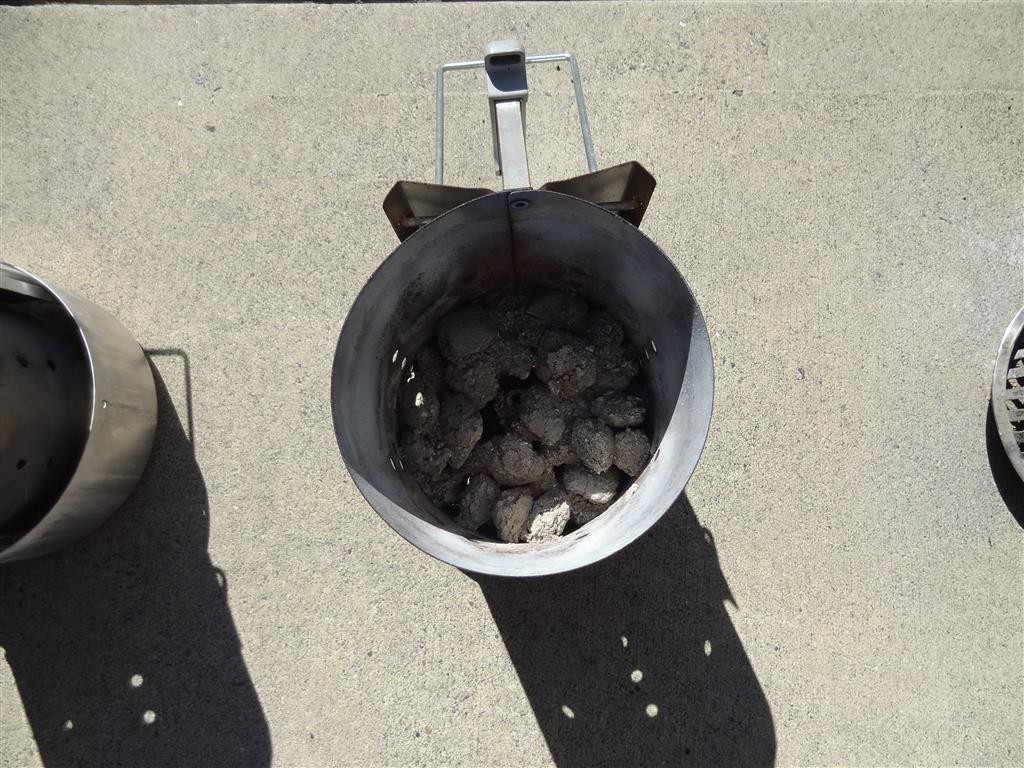
Stubbs:
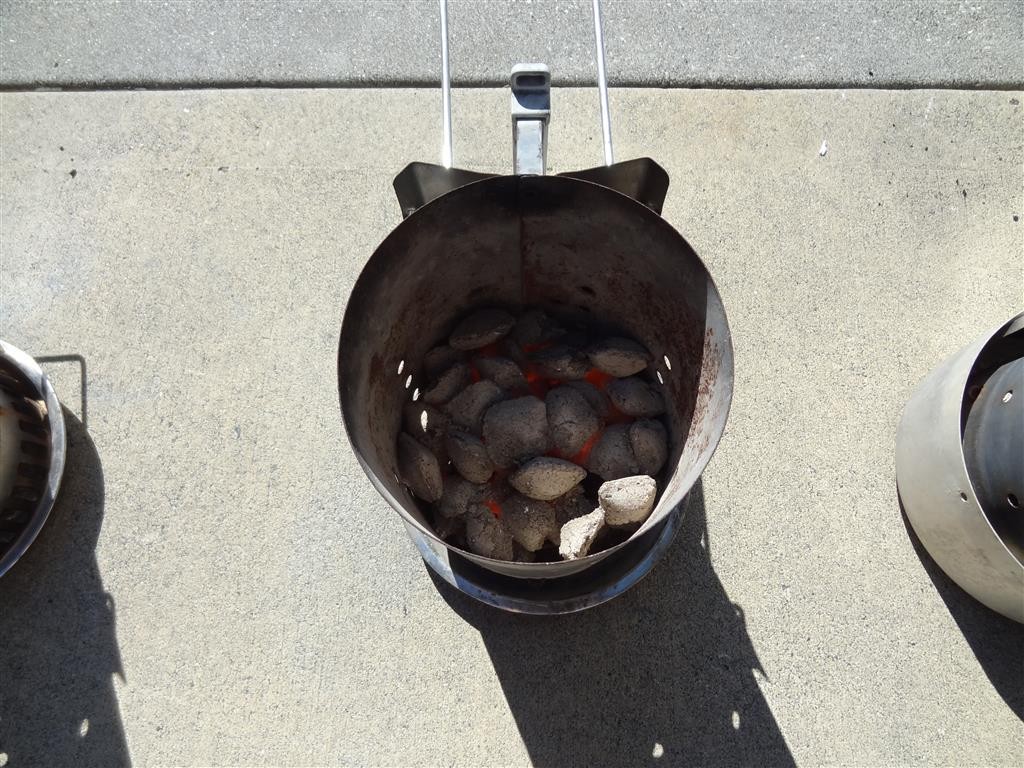
Kingsford Blue:
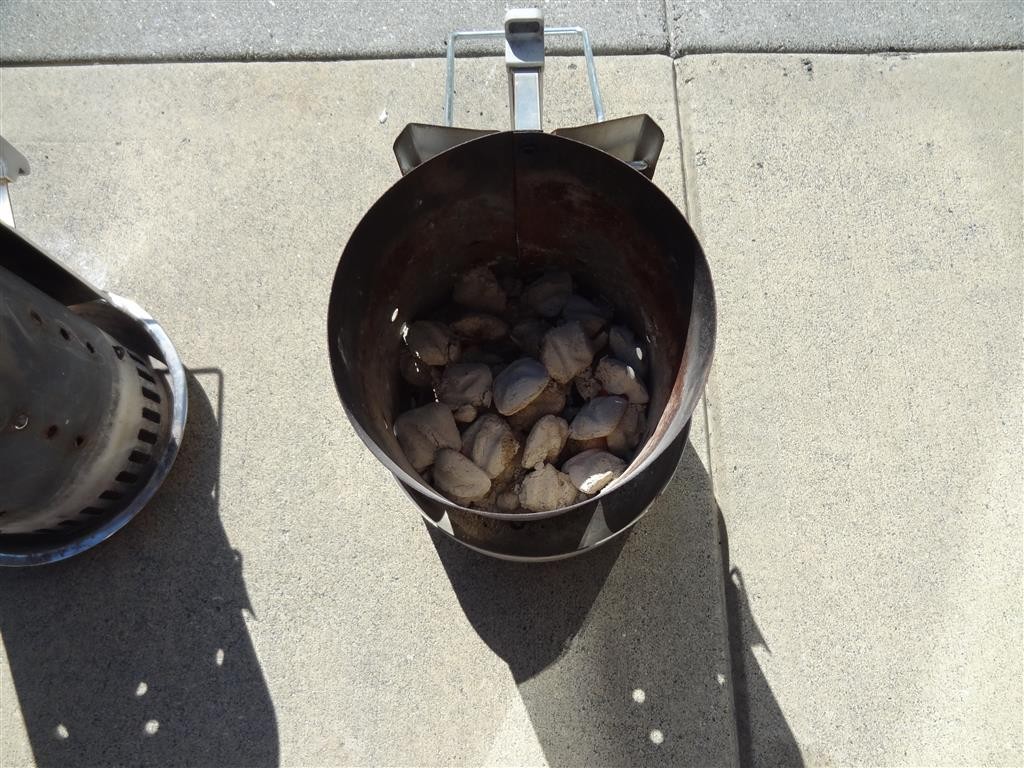
1:15… still going…
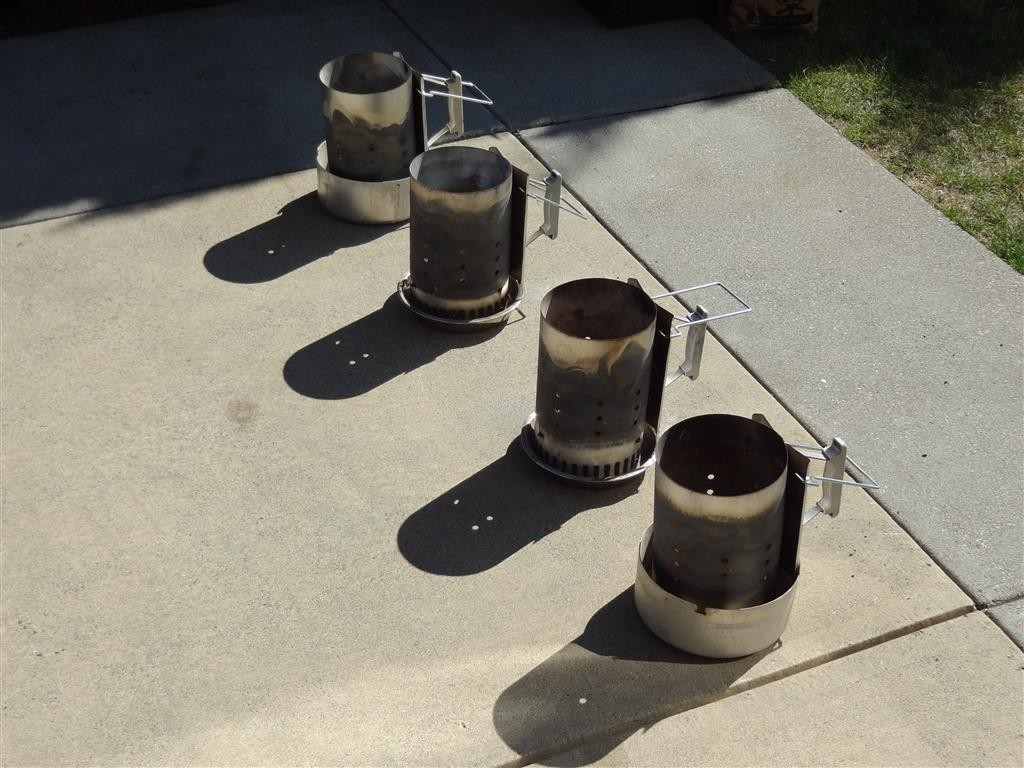
Here we are at an 1:30min – Comp just barely hanging on:
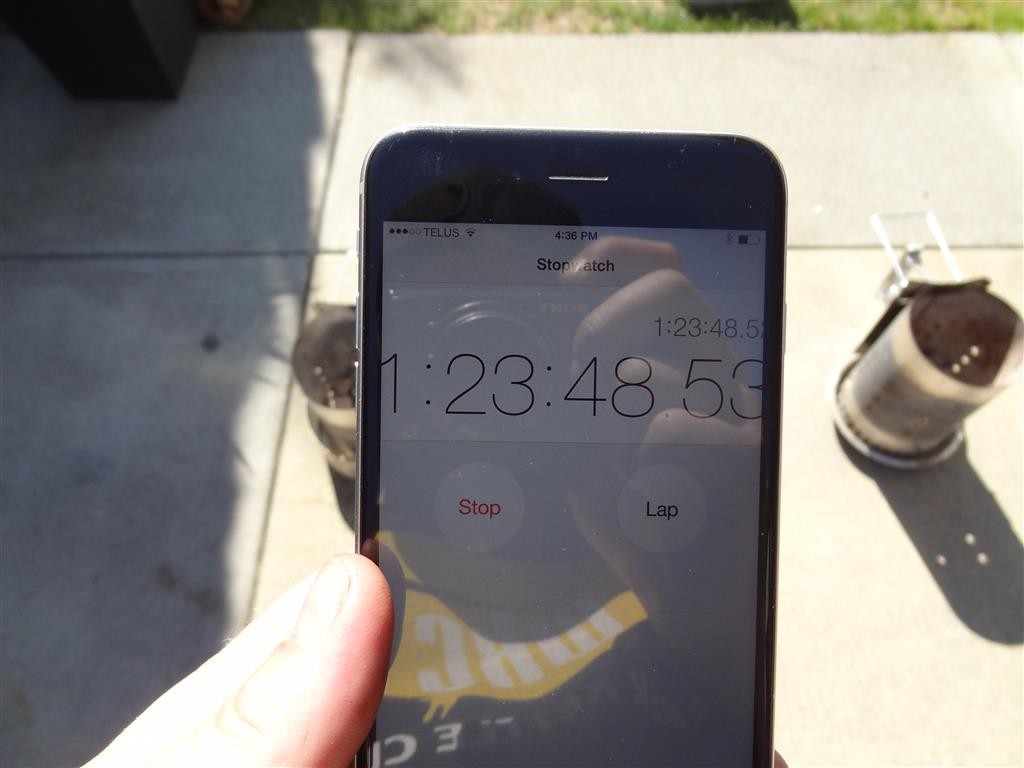
Kingsford Comp:
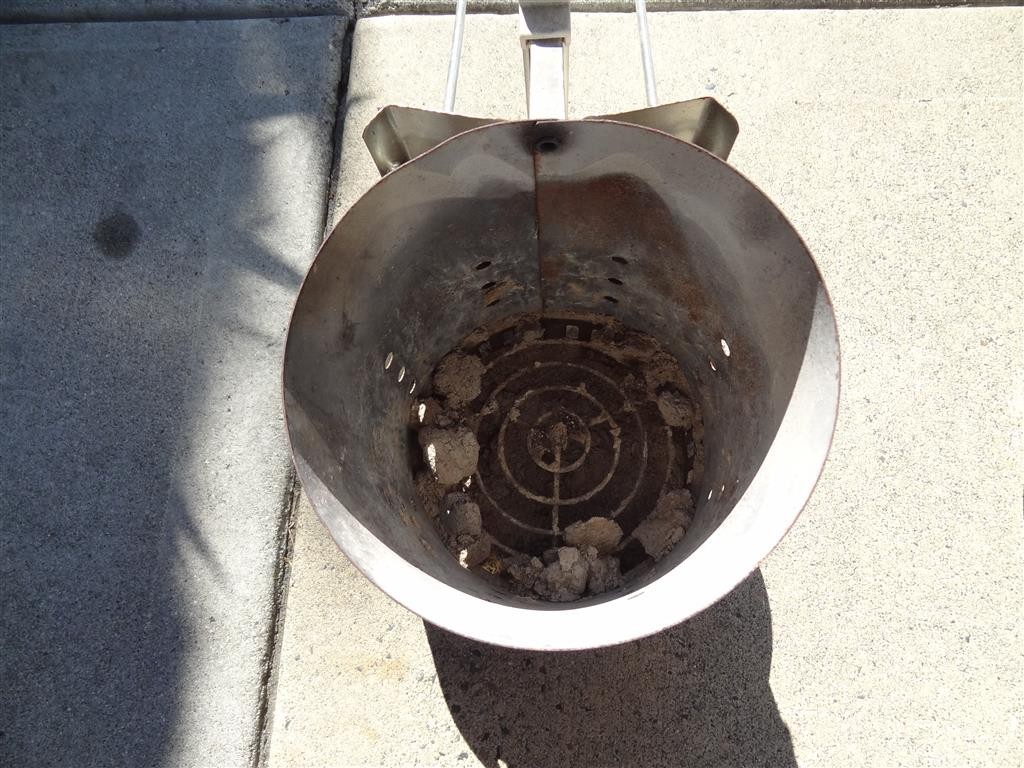
Trader Joes:
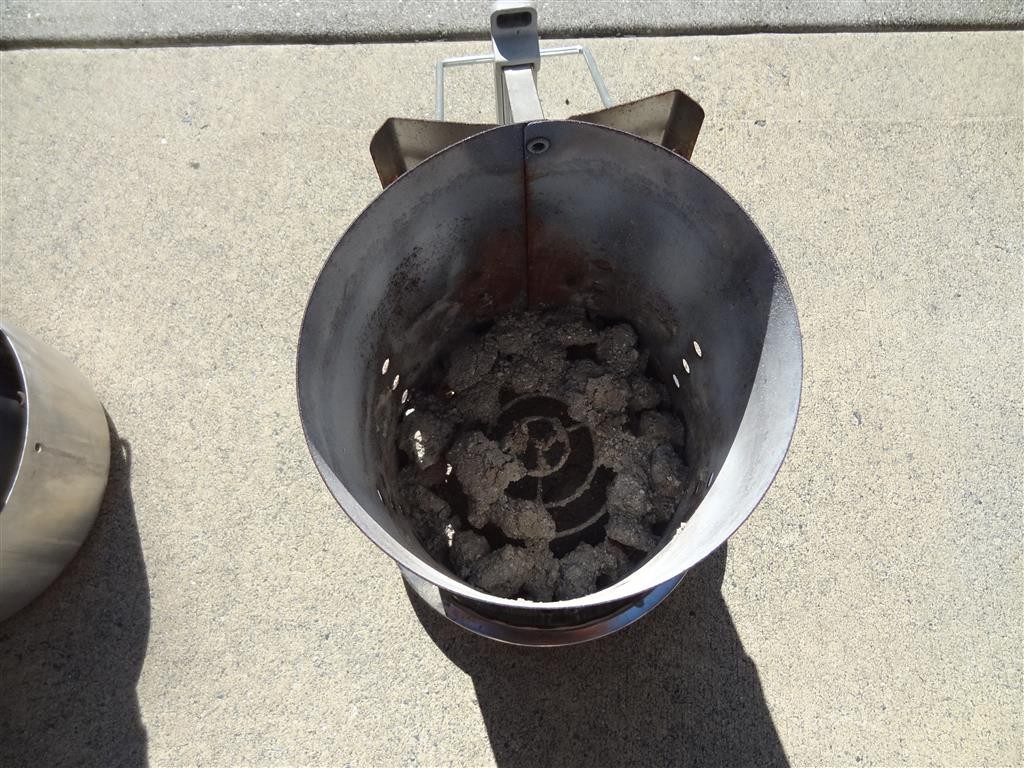
Stubbs:
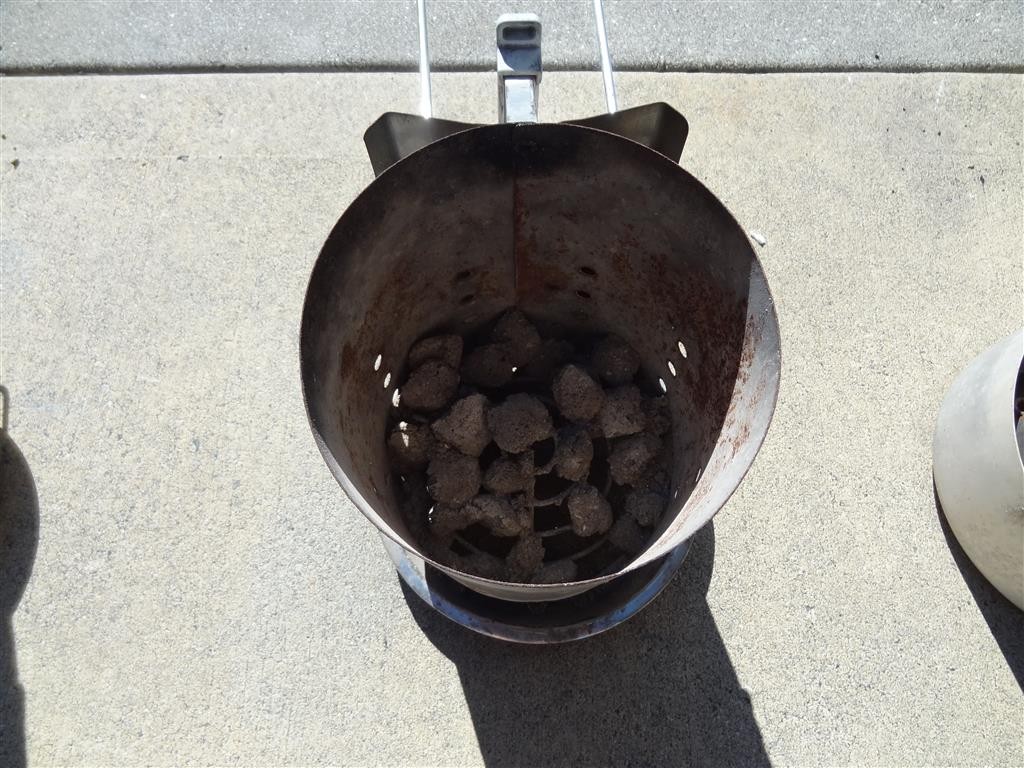
Kingsford Blue:
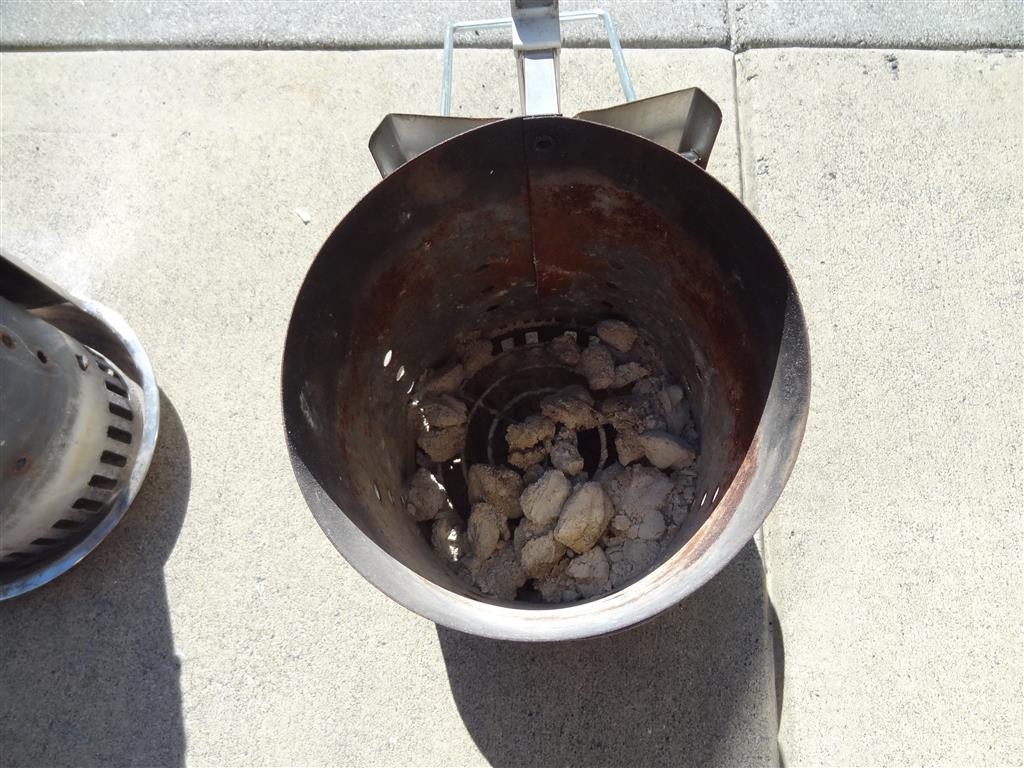
And finally after roughly 1 hour and 37min (adjusted) the 5lbs of Kingsford Comp was shot!
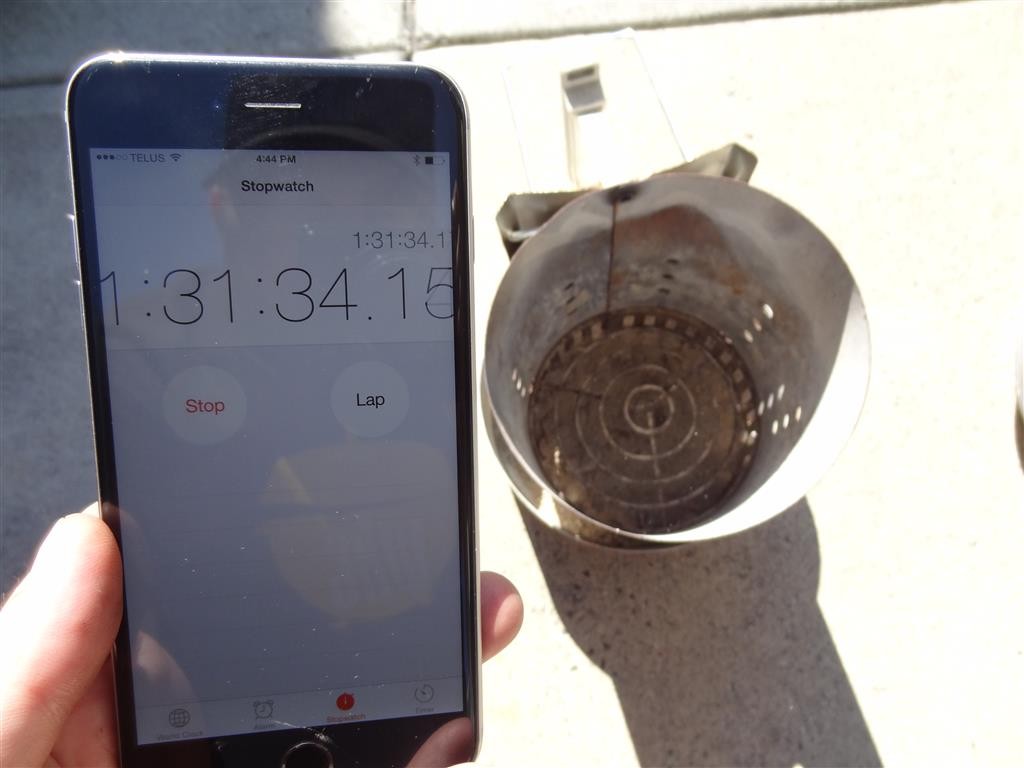
Second to die was the Kingsford BB 12min later @ 1 Hour and 49min:
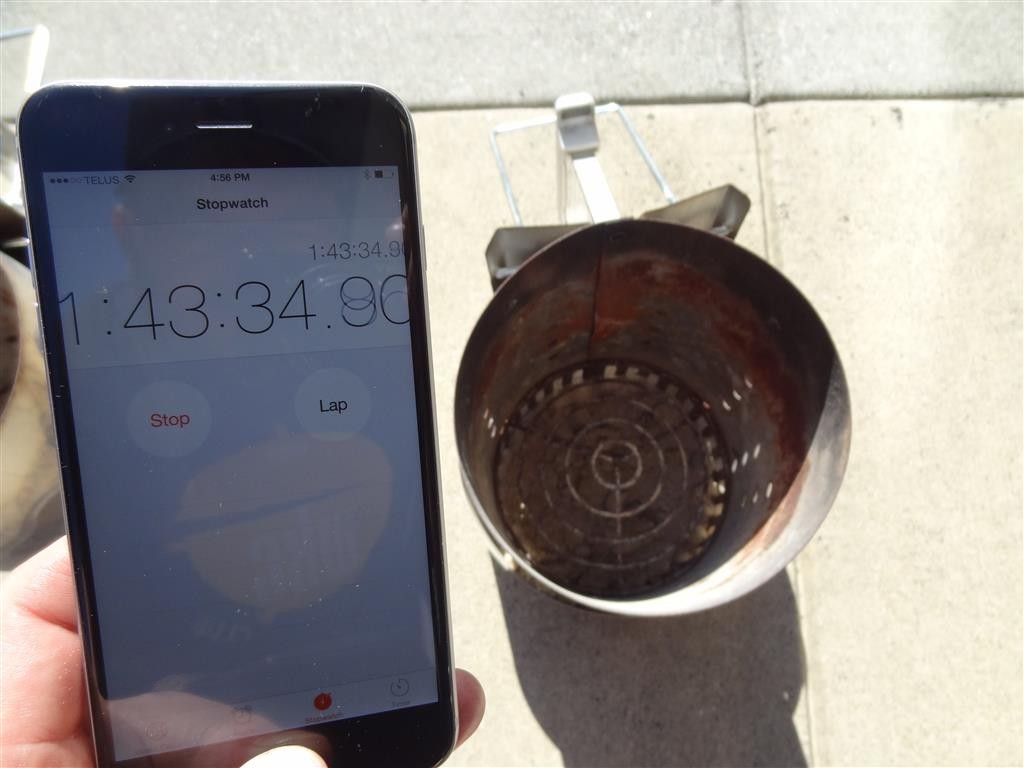
Third to go was the Trader Joes only 5min later @ 1h 53min
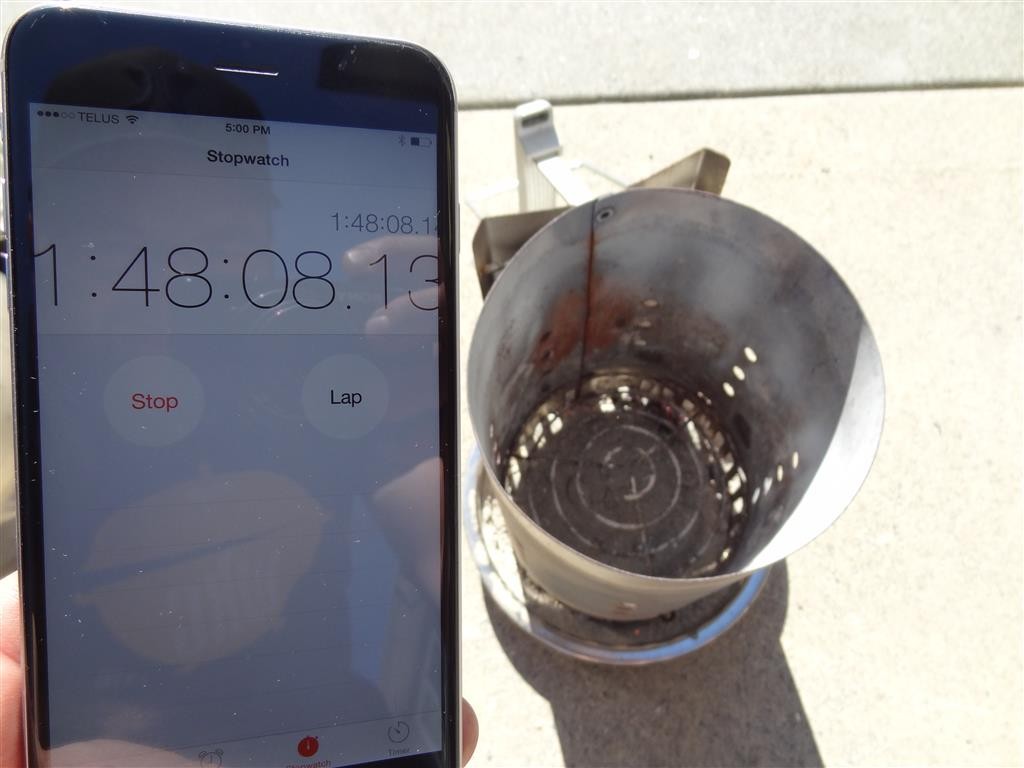
And finally the Stubbs just 3 min behind the Trader Joes @ 1h 56min

So final burn times were:
1:37min Kingsford Comp
1:49min Kingsford Blue
1:53min Trader Joes
1:56min Stubbs Briquettes
The Comp decisively died off the fastest but the other three came in surprisingly close within only minutes of each other.
So how about ash?!?! Here’s a visual of the ash piles before moving and weighing:
Kingsford Comp:

Trader Joes:

Stubbs:

KBB:

To make the weight fair they were all measured in the same pot which weighs 13.15 oz.

Comp:

Trader Joes:

Stubbs:

Kingsford Blue:

Leftover Dry Ash Content Breakdown (bucket weight subtracted out):
Kingsford Comp: 5.9 oz
Trader Joes: 9.4 oz
Stubbs: 10.1 oz
Kingsford Blue Bag: 10.7 oz
The Kingsford Comp was the clear winner in this regard coming in at almost half that of the competitors. Once again the TJ’s Stubbs, And KBB came out very close on paper.
Final observations:
For high-heat grilling and searing I would definitely recommend the Kingsford Comp. I was quite surprised at the heat difference coming off the Comp as opposed to each of the other chimneys. They Comp you could stand 4 ft away and still feel the heat – the others were 3′ or less. The obvious downside to this high heat burn is the overall shorter burn times that it produced – so I would suggest going with one of the other three offerings for longer smokes and burn times. Of the three, the Kingsford Competition also smoked noticeably more on lighting with a thick white smoke that could be annoying to some.
Close behind was the KBB with slightly less dense white smoke, but the smoke itself I find very irritating to my eyes and lungs. As many have noted in the past it has a much more “chemical” smell and burn to it that the Comp and especially the TJ’s and Stubbs.
TJ’s – If it weren’t for the crumble and synthetic hairs this would be right at the top of the list with the Stubbs and is a great choice for a readily available and AFFORDABLE briquettes. 100% Natural (or so they say!) Less smoke than both the Kingsford products and almost on par with the Stubbs. This is good go-to standby that I would not hesistate reaching for
Stubbs Briquettes – These have been my go-to charcoal product for the past few months so I was happy to see the results I was experiencing at home translate over into the final numbers. The combination of long burn time, solid construction, size and most importantly an all natural clean burn were enough to push it over the top and past the other competitors in the challenge. If you can find this stuff locally I would highly recommend giving it a shot – especially if you can snag it on sale.
So there you have it – some real world results on some of the most common charcoal briquettes available. Now that you’ve done some homework I encourage you to experiment with a few different types yourself and see what works best for you.
Happy grilling!
Matt
